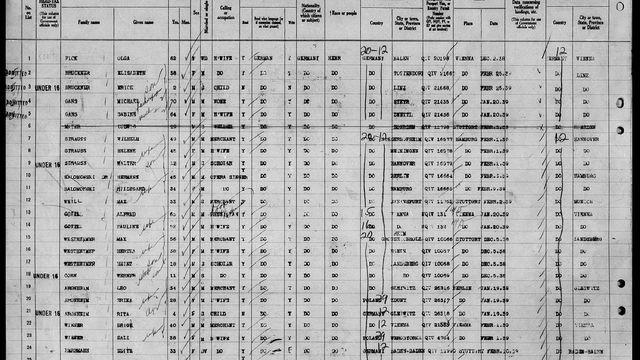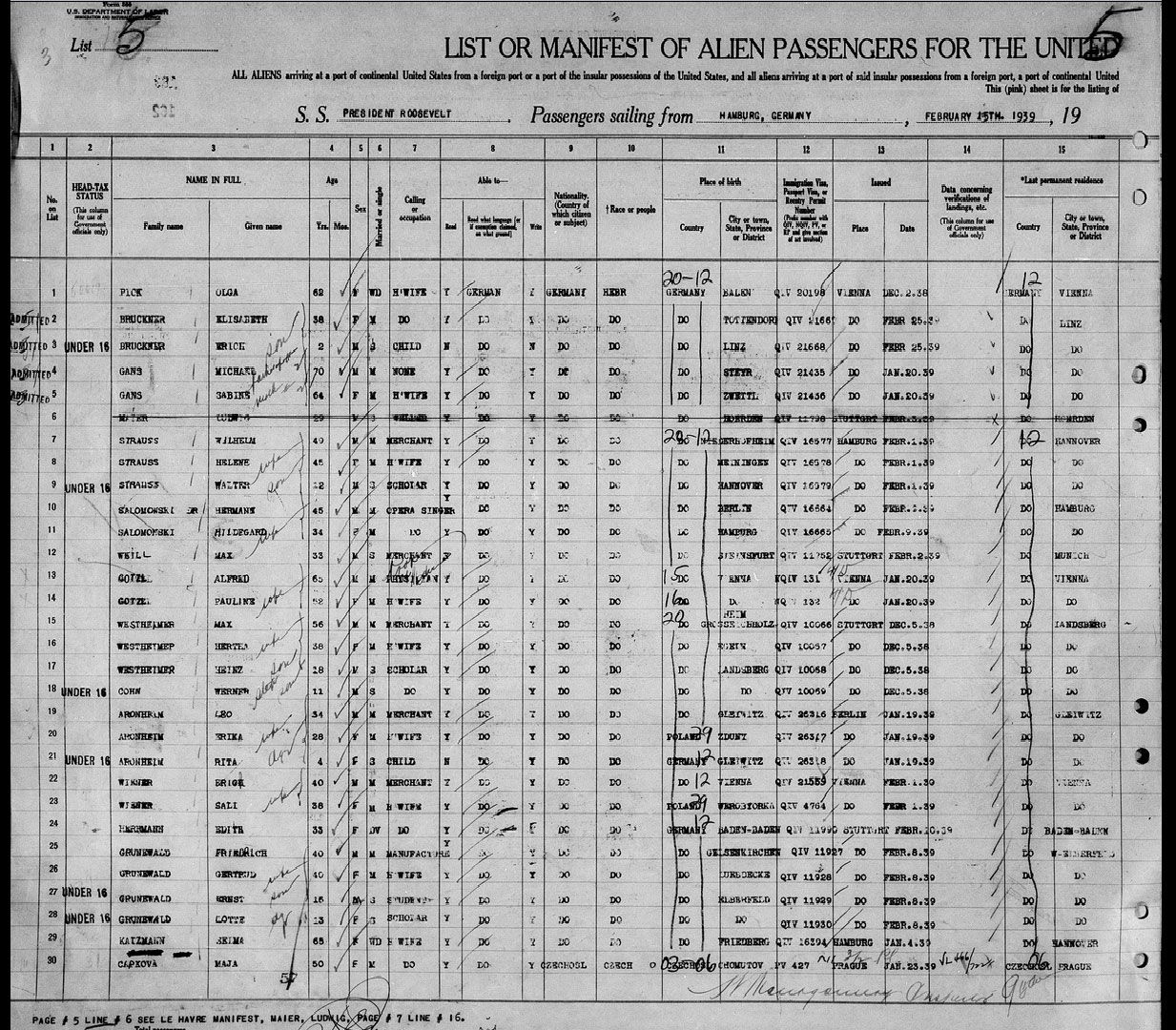
Episode 2: Setting Sail: The Grunewalds (now the Grunwalds) Come to America
In July 2017, the Hammer will launch its digital archive Loss and Restitution: The Story of the Grunwald Family Collection, exploring the life of Fred Grunwald, a businessman and collector whose donation of prints to UCLA created the foundation of what is now the UCLA Grunwald Center for the Graphic Arts. In this 7-part blog series, project researchers Kirk Nickel and Maia Woolner will share how they recreated Grunwald's story through archival research, from his early collecting days in Germany to the seizure of his collection by the Gestapo to his emigration to the United States and rebuilding his collection.
When our research team first met in the summer of 2015, it became apparent that, while we knew many details about Fred Grunwald’s life in Los Angeles, our understanding of his first forty years in Germany was quite sketchy. Ernest Grunwald, Fred's son, wrote a brief biography of his father that provides a great deal of insight into the major events that their family experienced before emigrating in 1939. Still, it was clear that we would need to do some archival research in order to establish a solid timeline, to expand our knowledge of the specific events that precipitated the Grunwalds’ emigration to the United States, and to discover what details we could of Fred’s art collection during the years between the world wars.
My first task was to establish the dates of the Grunwalds’ exit from Germany and entrance into the US, and I soon learned that the lists of foreign passengers documented by immigration officials at ports-of-entry are excellent resources for this sort of information. These passenger manifests record basic data such name, age, and place of origin, as well as the composition of passengers’ families, their occupation, literacy, and health. They also provide a glimpse of the other individuals—just off-stage, so to say—whose lives were caught up in their relocation. In the Grunwalds’ case, a “List or Manifest of Alien Passengers for the United States Immigrant Inspector” records the Grunewald family—Friedrich, Gertrud, Ernst, and Lotte—leaving Hamburg on February 15, 1939, aboard the S. S. President Roosevelt headed for New York, where they would arrive on February 26. Not only did this document provide us with the date that the Grunwalds left Germany, but it also clued us into the fact that they had changed the spelling of their last name, from Grunewald to Grunwald, after arriving in California. This would prove to be a critical piece of information as our research led into larger archives with increasingly complicated cataloguing systems.

Asked to supply the name of the “nearest relative or friend in country whence alien came…,” Fred listed “Irma Wistinetzki, 11 Selmaweg, W’Elberfeld.” Fred’s sister Irma and her husband Hermann lived adjacent to the Grunwalds in West Elberfeld, today part of the city of Wuppertal. The Wistinetzki’s daughter, Ilse, lived in Long Island, New York, and she is listed as the Grunwalds’ nearest relative in the United States. The Wistinetzkis had been an important source of support for Fred and his family for many years, and they have their own story of emigration that I’ll recount in a future post. But Ilse in Long Island was not Grunwalds’ ultimate destination. From the start, they had been bound for Los Angeles, where a second ship manifest states they were to be hosted by a Dr. Henry K. Kahn. Fred was acquainted with his host through their shared involvement in Jewish fraternal organizations, and it seems that it was Dr. Kahn who helped orient the Grunwalds to life in Los Angeles. During the first few years in the city, Fred was preoccupied with his family’s citizenship applications and his efforts to get a new business off the ground. His return to print collecting would come later.





